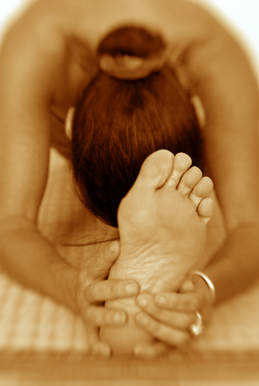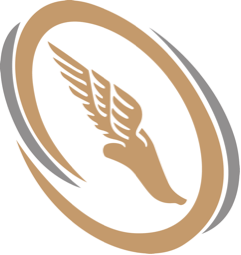Equinus Deformity
What is Equinus Deformity?
Pes Equinus
Equinus is a condition in which the upward bending motion of the ankle joint is limited. Someone with equinus lacks the flexibility to bring the top of the foot toward the front of the leg. Equinus can occur in one or both feet. When it involves both feet, the limitation of motion is sometimes worse in one foot than in the other.
People with equinus develop ways to "compensate" for their limited ankle motion, and this often leads to other foot, leg, or back problems. The most common methods of compensation are flattening of the arch or picking up the heel early when walking, placing increased pressure on the ball of the foot. Other patients compensate by "toe walking," while a smaller number take steps by bending abnormally at the hip or knee.

Causes
There are several possible causes for the limited range of ankle motion. Often it is due to tightness in the Achilles tendon or calf muscles (the soleus muscle and/or gastrocnemius muscle). In some patients, this tightness is congenital (present at birth) and sometimes it is an inherited trait. Other patients acquire the tightness from being in a cast, being on crutches, or frequently wearing high-heeled shoes. In addition, diabetes can affect the fibres of the Achilles tendon and cause tightness.
Sometimes equinus is related to a bone blocking the ankle motion. For example, a fragment of a broken bone following an ankle injury, or bone block, can get in the way and restrict motion.
Equinus may also result from one leg being shorter than the other.
Less often, equinus is caused by spasms in the calf muscle. These spasms may be signs of an underlying neurologic disorder.
Symptoms
Depending on how a patient compensates for the inability to bend properly at the ankle, a variety of foot conditions can develop, including:
- Plantar fasciitis (arch/heel pain).
- Calf cramping.
- Tendonitis (inflammation in the Achilles tendon).
- Metatarsalgia (pain and/or callusing on the ball of the foot).
- Flatfoot.
- Arthritis of the midfoot (middle area of the foot).
- Pressure sores on the ball of the foot or the arch.
- Bunions and hammertoes.
- Ankle pain.
- Shin splints.
Diagnosis
Most patients with equinus are unaware they have this condition when they first visit the doctor. Instead, they come to the doctor seeking relief for foot problems associated with equinus.
To diagnose equinus, the foot and ankle surgeon will evaluate the ankle's range of motion when the knee is flexed (bent) as well as extended (straightened). This enables the surgeon to identify whether the tendon or muscle is tight and to assess whether bone is interfering with ankle motion. X-rays may also be ordered. In some cases, the foot and ankle surgeon may refer the patient for neurologic evaluation.
Non-surgical Treatment
Treatment includes strategies aimed at relieving the symptoms and conditions associated with equinus. In addition, the patient is treated for the equinus itself through one or more of the following options:
- Night splint
- Heel lifts.
- Arch supports or orthotic devices.
- Physical therapy.
When is Surgery Needed?
Most patients with equinus are unaware they have this condition when they first visit the doctor. Instead, they come to the doctor seeking relief for foot problems associated with equinus.
To diagnose equinus, the foot and ankle surgeon will evaluate the ankle's range of motion when the knee is flexed (bent) as well as extended (straightened). This enables the surgeon to identify whether the tendon or muscle is tight and to assess whether bone is interfering with ankle motion. X-rays may also be ordered. In some cases, the foot and ankle surgeon may refer the patient for neurologic evaluation.
Complete and comprehensive spectrum of both diagnosis and treatments
QUICK LINKS
ABOUT
Specialist Foot and Ankle Surgery and Consultation in Manchester. Our specialist team of surgeons and podiatrists provide the highest level of expertise in the effective management of any foot and ankle condition. .
Manchester Foot And Ankle Clinic / North West OrthoSports is a Registered Trade Mark
North West OrthoSports / Manchester Foot & Ankle Clinic Ltd
93-107 . Lancefield Steet
Glasgow .G3 8HZ
Limited Company-387376
VAT Registration - 214 0705 54
Please See Our Legal Disclaimer on Online Medical Advice
All Rights Reserved | Manchester Foot And Ankle Clinic | Privacy Policy


